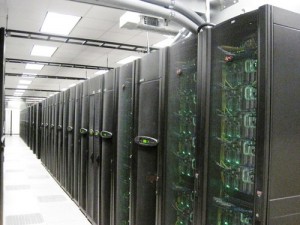 Not fazed by a takeover battle looming on the sidelines, members of Dell’s research division are putting together the pieces for prototype ARM supercomputers that could be deployed in the future.
Not fazed by a takeover battle looming on the sidelines, members of Dell’s research division are putting together the pieces for prototype ARM supercomputers that could be deployed in the future.
Dell has a good idea what an ARM supercomputer would look like, and prototype designs and other “parts” are being experimented with in Dell’s laboratories, said Tim Carroll, director at Dell’s research computing group.
“It is a solution right now looking for a problem,” Carroll said. “ARM is going to have a place. The market is going to tell us what that is.”
ARM processors go into most smartphones and tablets and are attracting interest for use in servers. The power-efficient CPUs could help cut energy consumed by servers in data centres while bringing enough processing power to handle fast-moving Web search or social-networking requests. Dell is already offering low- to midrange prototype ARM servers for customers to play with.
Depending on workloads, ARM processors could find limited use in supercomputers, Carroll said. ARM processors will deliver dollar savings per FLOP (floating point operations per second) per rack, and some institution will take a leap of faith and use ARM processors in a supercomputer, Carroll said.
Some of the world’s fastest supercomputers use x86 processors from Intel or Advanced Micro Devices, Power processors from IBM or Sparc processors from Oracle. ARM processors are currently not considered powerful enough for supercomputers, which are mostly used by research organisations running complex calculations.
The inability to pass a certain processing capability threshold is a handicap for ARM in supercomputing, but Carroll noted that the market can change swiftly, as witnessed by graphics processors, which are now a key co-processor alongside CPUs in supercomputers.
“Do not presuppose you understand all the different use cases that are out there,” Carroll said.
The use case for ARM processors has yet to be determined, but curious researchers will find answers, Carroll said. In that regard they will be ahead of the commercial sector, which has deployment cycles and deadlines to keep in mind, Carroll said.
The supercomputing market is also changing with the emergence of the cloud, which could influence the way systems are built, Carroll said. Complex calculations may be done in remote servers, with the cloud being the mechanism for the request and delivery of information.
“We are going to get there. Cloud as a transport mechanism to tie together all these big infrastructure implementations is going to have to happen,” Carroll said.
ARM processors are also inexpensive, especially when compared to FPGAs (field programmable gate arrays), Carroll said. FPGAs are reprogrammable circuits used in many supercomputers.
The Barcelona Supercomputing Center has been at the forefront of experimenting with ARM supercomputers. Last year BSC said it was making a prototype supercomputer with Samsung’s Exynos 5 dual-core processor, and in late 2011 it announced a supercomputer based on Nvidia’s Tegra 3 processors.
Chips for ARM servers are offered by Calxeda, Marvell and Texas Instruments. ARM processors right now are only 32- and 40-bit. But ARM has already announced its first 64-bit ARMv8 architecture and accompanying Cortex-A57 and Cortex-A53 processor designs based on the architecture. Advanced Micro Devices, AppliedMicro and others are expected to offer integrated ARM chips for servers.
But it could take a while for ARM to be accepted by the research community, Carroll said. Software written today is still not being targeted at ARM servers, and researchers tend to hold on to old code, Carroll said. ARM, x86 and Power processors run on different instruction sets and support different code bases.
Dell today builds servers with x86 processors. A supercomputer based on Dell’s blade design was deployed last year at the Texas Advanced Supercomputing Centre, which is based at the University of Texas, Austin. Called Stampede and rated the world’s seventh-fastest supercomputer, the machine delivers a peak performance of 10 petaflops. The world’s fastest supercomputer at the U.S. Department of Energy’s Oak Ridge National Laboratory, Titan, delivers peak performance of 20 petaflops.
The Stampede supercomputer has a total of 102,400 processor cores which include Intel’s Xeon E5 CPU, Nvidia graphics processors and Intel’s Xeon Phi co-processor. The 182-rack supercomputer has 270TB of RAM, 14 petabytes of storage, occupies 11,000 square feet of space, employs 75 miles of network cables and draws 3 megawatts of power.
Dell isn’t primarily viewed as a supercomputing vendor, but Carroll wants to meet the needs of customers regardless of processor architecture.
“We’re getting better and better,” Carroll said.





